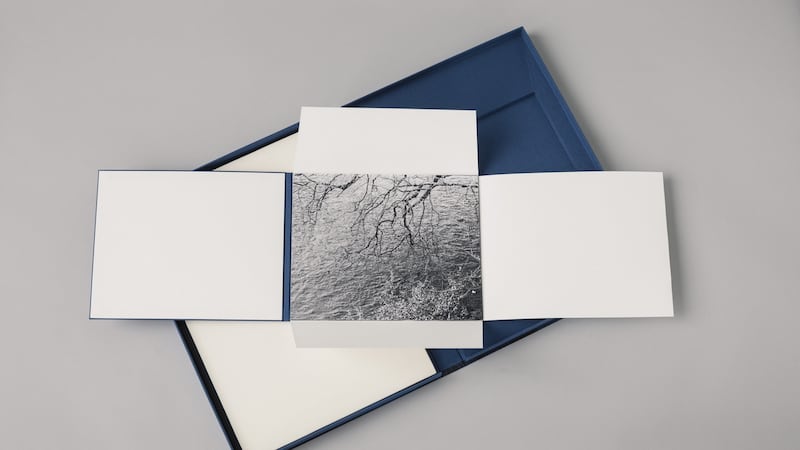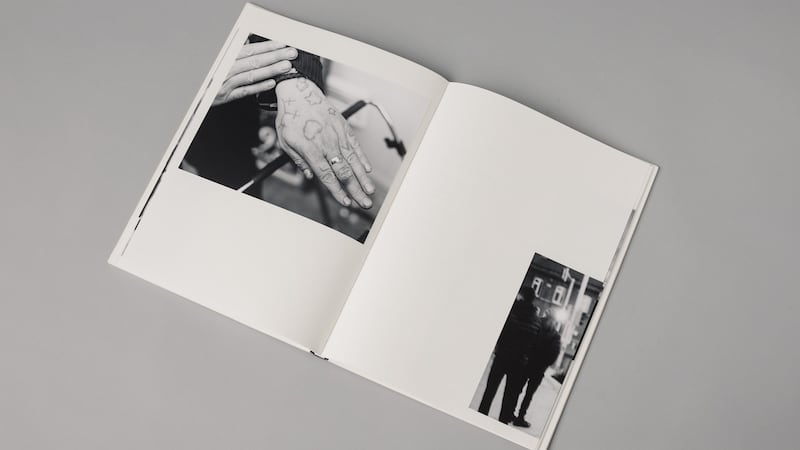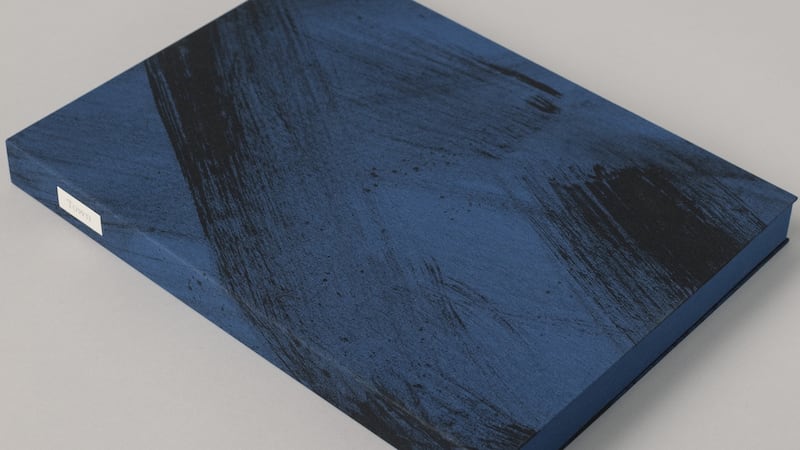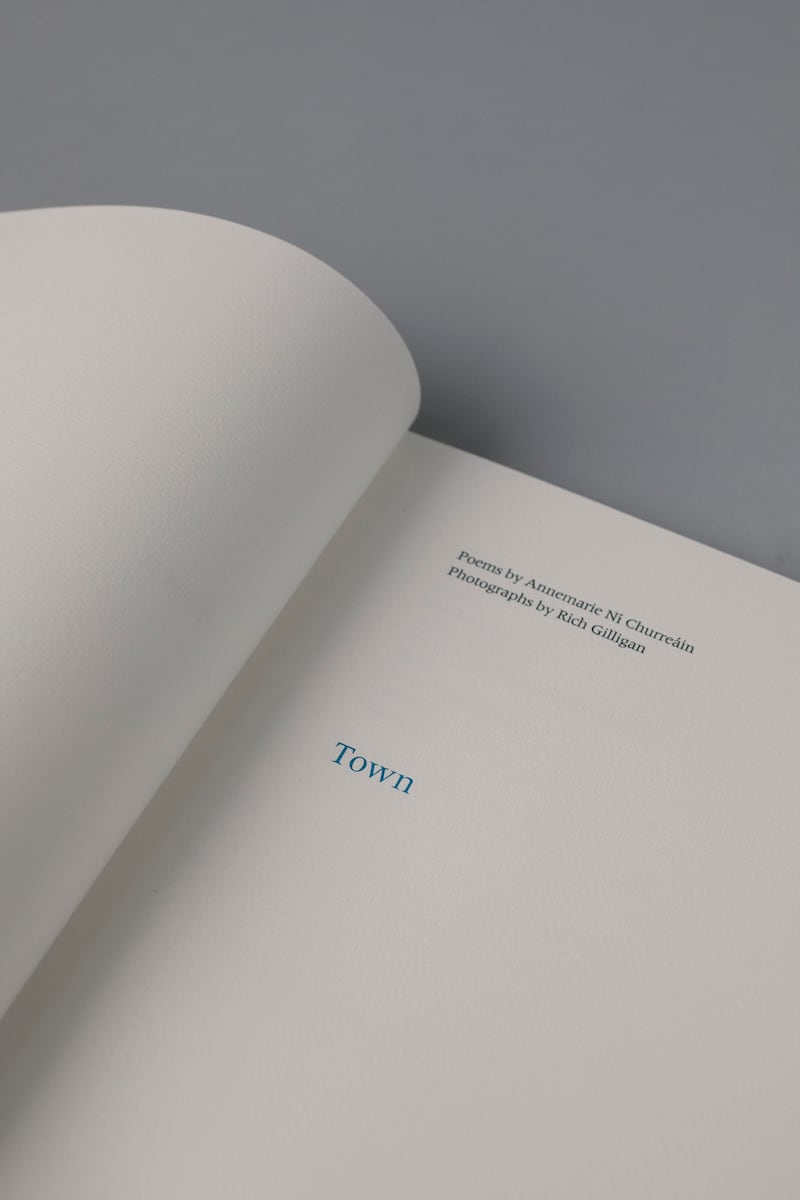As a poet I am compelled towards mystery. I am all the time trying to question what I think I already know. Dublin is the place of my birth. I have lived and worked here for over half my life. When the Salvage Press invited me to compose a suite of new poems inspired by the Dublin landscape, I was keen to expand my sense of the city I now call “home”.
Town is a new limited edition book that features 10 hand-printed photographs by Rich Gilligan along with 10 newly composed poems. Gilligan, who is originally from Coolmine, now lives in New York. From the beginning I was intrigued by his images of skateboarders, by his cool, bold perspective, and by our wildly different approaches to making work. Gilligan photographs landscape in a way that feels fresh and contemporary. Often, my poems like to follow a thing to its ancient source.


Under the guidance of Jamie Murphy at the Salvage Press, Town was destined to flourish. Murphy is devoted to preserving, promoting and pursuing excellence in design, typography and letterpress printing. Yet, an interdisciplinary project is by nature a uniquely rich and tricky animal. Murphy believes that “a book is essentially a bringing together of basic elements – content, design, materials, production – but also it is a meeting of minds – author, image maker, designer, printer. Only when every aspect has been treated with the greatest care and respect can a book truly be regarded a successful undertaking.” You must “stay true to your voice,” adds Gilligan, “and trust that so too will your collaborators.”
Most important for me is always the freedom to write the poems I need to write. Fortunately, Murphy was clear that no part of the city was off limits. Having recently completed a visit with students to Mountjoy Prison I wanted to acknowledge unheard voices within the Dublin landscape. The resulting poem, Liberty Suit, is an ode that marries prison history with the legend of Elatha – said to be an ancient moon god. Other poems reference the Monto – once one of Europe’s biggest red light districts; a 2013 gangland shooting near my Dublin home; and a Neolithic burial crypt located in the Phoenix Park.
In my work, language and geography are often intertwined. That Dublin is bisected by a river explains a lot, I think, about the city’s ear for poetry. Dubliners are naturally inclined towards cadence and unafraid of the dark twists and turns a rhythm might take. In the Town poems I began to see Dublin as a place of both shadows and shadowlight, of siege and desire, of desire and loss. During my research I learned that in 2012 the relic heart of Dublin’s patron saint was stolen from Christ Church Cathedral. It was totally surreal when, on the day I completed a poem titled The Heart of Saint Laurence O’Toole, the newspaper headline read: “800-year-old relic heart recovered”.
If it takes a village to raise a child, then it takes a small global community to realise the extraordinary vision of the Salvage Press. Town was designed, type-set and letterpress printed by Murphy at Distillers Press, NCAD. The metal type used is Adrian Frutiger’s Méridien cast by age-old methods in Germany. Gilligan’s photographs were enlarged by hand from 35mm negatives onto resin-coated Ilford MGIV by Barbara Wilson in London. The watermarked 200gsm handmade paper was commissioned from the Velké Losiny Mill in the Czech Republic. The bindings were executed by Craig Jensen, assisted closely by Marc Hammonds, at BookLab II, San Marcos, Texas. Finally, the book was launched by novelist Belinda McKeon at the American Irish Historical Society in New York.


As a writer, every new phase of a book project is precious. But a personal highlight of Town was the opportunity to observe the process of letterpress printing. In a world that seems sometimes driven to frenzy by newer and flashier technology, the letterpress printer restores a sense of traditional skill to the craft of words. To physically impress a letter on a page requires patience and extreme care. To make an error is to suffer the consequences in terms of time and material cost. In the hands of Murphy, Town was printed in an edition of 80 copies. Copies marked 1-50 are bound in painted cloth over boards, housed in a cloth covered slipcase. Copies lettered A-Z are bound in full alum-tawed goatskin and are each housed, accompanied by a portfolio containing eight additional photographic prints, in a painted cloth covered Solander box.
What did I learn about Dublin? I learned that poetry is one way of exploring the city’s margins, of probing what seems always and at times not at all on the verge of change. Even today I am still thinking about violence as central to the landscape and of the city as “a form of remembering”. In Town there was no escaping history, no matter how dark, no matter how buried. Yet, to see Dublin take shape on the page was a celebration, a gesture of hope. Carefully Murphy moved images and text into place and a thing of beauty was born. At the project’s end, I met with filmmaker Ruairi Conaty to record a poem at the Irish National War Memorial Gardens. It was perhaps a fitting tribute to speak aloud the words to Dublin’s ghosts. Sometimes, the hardest part of any poem is letting the poem go. Thoughtfully, and with the same care that made Town truly memorable, the camera lingered on a stone inscription “… we have found safety”. Town goes now on its own journey into the most special libraries and revered collections, both at home and across the globe.
[ thesalvagepress.comOpens in new window ]
The Feud
Shadowblast.
Skin parts
and the boy dreams the wet
after rain settling
pearl
by pearl
on a yarrow stem.
Eighteen summers old
and soon the field around him will inflate
like a bud beneath a stranger's kiss.
Let us go out to the field,
Cain said.
Beyond the bridge, a kinglet with a steely eye
tucks a feather back into place
as the water shines.
In the Gardens of Memorial
how many sons?
For those already in the earth
the inscription reads
we have found safety.











